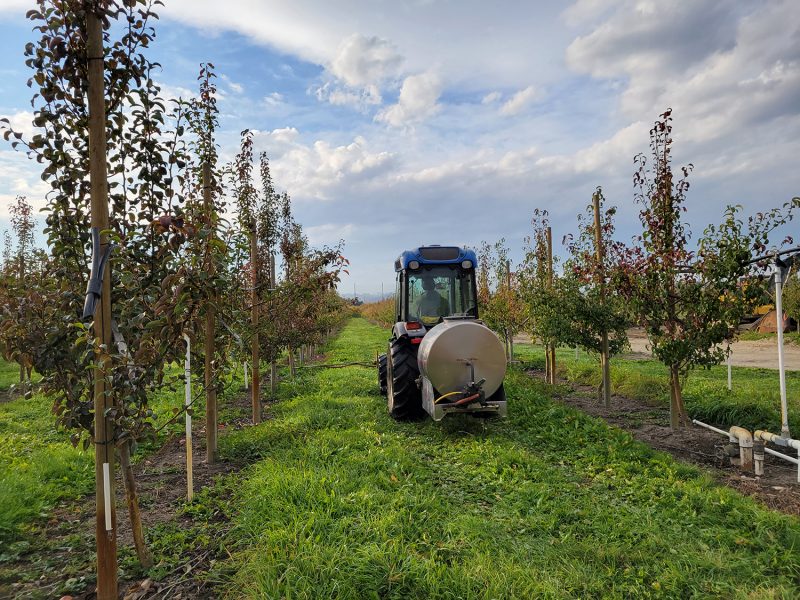KELOWNA – New regulations under the federal Pest Control Products Act now restrict the practice of tank-mixing to only products that are labelled specifically for mixing.
“Under the old regulations, products could be tank-mixed if they were both labelled as registered to be used on a crop and did not specify otherwise,” provincial pesticide specialist Ken Sapsford told BC Cherry Association members on February 24.
However, the PCPA prohibits the use of pest control products in a way that is inconsistent with the label.
The Pest Management Regulatory Agency (PMRA) has come out with a guidance document that requires new label statements for products that must read, “This product may be tank-mixed with registered pest control products whose labels also allow for mixing providing the entirety of both labels.”
“As a result, if a label contains no guidance related to tank-mixing, then tank mixes are not permitted,” Sapsford says.
Sapsford says the PMRA has given product registrants two years to update their labels.
“PMRA is not going to be doing any compliance and enforcement on this for the next two years – the 2025 growing season – until labels are updated,” Sapsford says.
Sapsford also gave an update on regulations for pesticide drift developed by the BC Ministry of Environment and Climate Change Strategy.
“Drift is one of the most important things we are working with, especially here in the valley where we have such an urban-rural interface,” Sapsford notes. “We have neighbours and schools right next to our orchards and we have to be sure we are doing things properly.”
In addition to ensuring contaminated run-off does not enter a watercourse or groundwater, the provincial Code of Practice for Agricultural Environmental Management requires pesticide applicators take all “reasonably necessary” precautions to prevent pesticide drift from entering a watercourse or groundwater as well as “all precautions that are reasonably necessary to prevent an unreasonable volume of pesticide spray drift from crossing a property boundary are taken, unless the person in possession of the property into which the drift crosses allows otherwise.”
Sapsford personally worked to ensure the wording served farmers’ interests.
“I was on a committee for more than a year to make sure they put that ‘unreasonable volume’ in there,” Sapsford says. “We know that zero spray drift is not possible. But we now must be sure we are doing everything possible to avoid that drift.”
Provincial compliance officers may respond to complaints from neighbours.
“If they find you have not taken the proper reasonable precautions, there could be a fine associated with that,” Sapsford says.
There is also a new emphasis on record-keeping.
“Keeping records is nothing new, but one of the things we need to add on to our records is the date and time and location of our spraying and also the temperature, wind direction and wind speed,” says Sapsford, explaining that they’re for the applicator’s protection.
“If you have good records showing that there is no way the drift could have gone in a certain direction, if a compliance officer comes out, you have got records to show that you have done everything possible,” he says.
Sapsford reviewed spray drift management techniques that can help growers.
“Identify sensitive areas and be careful to time your sprays for a favourable wind,” he advises. “You can consider planting hedges at the edge of your property to minimize drift.”
Sapsford also urges growers to make the best use of their equipment.
“Make sure your operator is trained properly and your sprayer is calibrated and the speed adjusted to suit your orchard rows,” he says.


 Industry looks to move needle on labour shortage
Industry looks to move needle on labour shortage